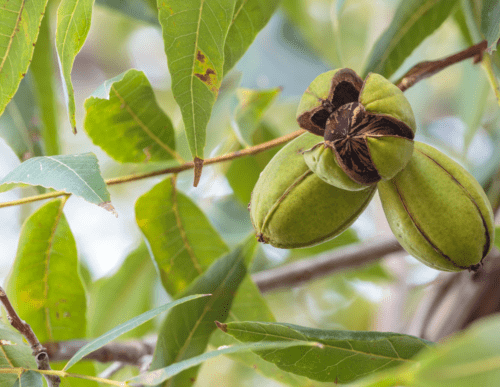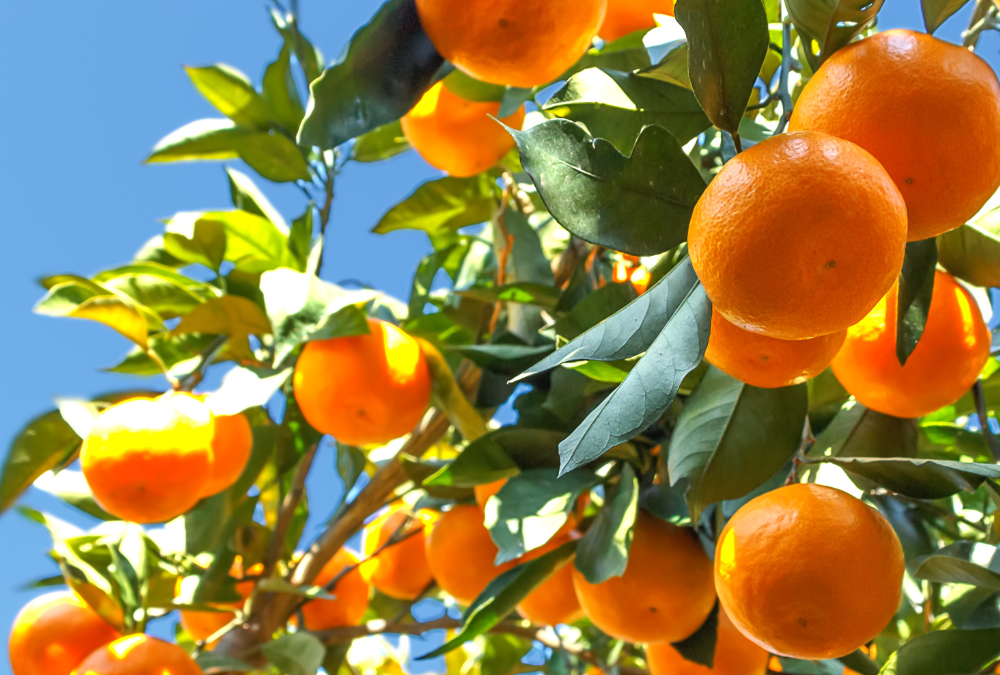Thank you for joining us for the latest Happy Gardener. Today we’re bringing you a couple of things to keep in mind when it comes to fruit and pecan trees the month of September. Hopefully you have been keeping these trees well-watered through the brutal summer; extra care for plants is always warranted in extreme temperatures in San Antonio. We’re keeping positive vibes that fall rains will soon be coming to offer a little relief not only to our thirsty plants, but to our hefty water bills as well. Take a look at our tips for keeping healthy fruit and pecan trees in September.


Fruit trees that bloom in spring (peach, pear, apricots, plums, some apples, etc..) set buds mid summer to early fall. They are moist likely already present in the branches. This is the time to hold off on fertilizing these varieties. You want to avoid pushing any late season growth that could get damaged in wither temperatures.
If you’ve been watering your established hardy fruit trees religiously, first of all, good for you! Secondly, you can probably allow fall rains to take over the job now (barring anymore extended drought periods). These trees are heading into dormancy, and weaning from the extra water you’ve been giving them just gets them prepared. This does NOT apply to new plantings or any fruit trees you are going to be planting fall through winter. Avoid any major pruning at this time as well, only removing broken/damaged limbs.


Fruit trees like persimmons, citrus (including satsumas and kumquats), and some apples and pears, DO NEED to have at least an inch of water every week or two as they are still ripening and coming into their harvest time. Keep the area under the dripline (the area beneath and just beyond branch spread) free of weeds as they can compete for any soil moisture in that area containing the fruit trees’ feeder roots.
You could squeeze in one more application of fertilizer for citrus this month, but stop no later than mid October. After fall comes winter; remember that citrus is always susceptible to damage by a freeze. New citrus trees should be grown in containers for the first 3-4 years. This allows you to move the tree to a protected area in these crucial early years. Check out this link from TAMU that has some really great info all about growing citrus in Texas.


This month, pecans are completing the process of filling their shells with kernels. Ample water is essential for this process. Hopefully you’ve been good little gardeners and have been giving your pecan trees about 2 inches of water a week from April through now, and you’ll need to continue up until you’re ready to shuck your pecans!
Drought (as well as insect and disease issues) can contribute to leaf loss. No leaves = no carbohydrates being produced. No carbohydrates = no pecan kernels. No pecan kernels = a very unhappy gardener.
Remember that pecan trees have a large taproot, very large. Watering the trunk of your tree won’t do much. When you water, you should be watering slowly and deeply, and focusing on the dripline. (If you can’t find the dripline, go outside at high noon, stand under your pecan tree, and water the entire area that is shaded.
If pecan trees get stressed out through fall, not only do you not get a good harvest then, your harvest the following year will most likely be compromised. Show some love to your pecan tree now and reap the benefits.
For those of you interested in fruit trees, you’ll be able to find many varieties available at Rainbow Gardens this fall and winter. We hope this has helped any of you who are either growing fruit and/or pecan trees for the first time, or those of you who just needed a little reminder. Come on Fall rains!
~The Happy Gardener, Lisa Mulroy

